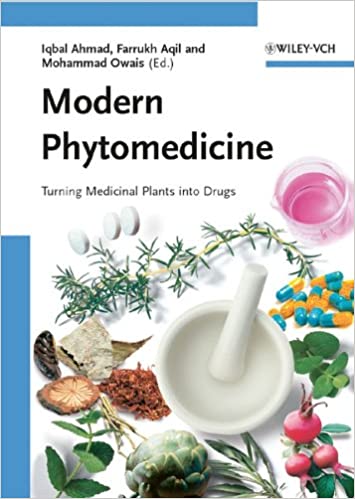

Most ebook files are in PDF format, so you can easily read them using various software such as Foxit Reader or directly on the Google Chrome browser.
Some ebook files are released by publishers in other formats such as .awz, .mobi, .epub, .fb2, etc. You may need to install specific software to read these formats on mobile/PC, such as Calibre.
Please read the tutorial at this link: https://ebookbell.com/faq
We offer FREE conversion to the popular formats you request; however, this may take some time. Therefore, right after payment, please email us, and we will try to provide the service as quickly as possible.
For some exceptional file formats or broken links (if any), please refrain from opening any disputes. Instead, email us first, and we will try to assist within a maximum of 6 hours.
EbookBell Team

4.3
68 reviewsPreface
Medicinal preparations derived from natural sources, especially from plants, have been in widespread use since time immemorial. Ancient texts of India and China contain exhaustive depictions of the use of a variety of plant-derived medications. In fact, plants remain the main source of medicines for a large proportion of the world’s population, particularly in the developing world, despite the advent of the pharmaceutical chemistry during the early twentieth century, which brought with it the ability to synthesize an enormous variety of medicinal drug molecules and allowed the treatment of previously incurable and/or life-threatening diseases.
Not surprisingly, chemically synthesized drug gained popularity and became the basis of pharmaceutical industry. Over the years, however, synthetic drugs have been plagued by unwanted side-effects, toxicity, and inefficiency, among other problems. In addition, the search for new drugs against a variety of illnesses through chemical synthesis and other modern approaches has not been encouraging. These factors, as well as the emergence of new infectious diseases, the prolife-ration of disorders such as cancer, and growing multidrug resistance in pathogenic microorganisms, have prompted renewed interest in the discovery of potential drug molecules from medicinal plants.
Herbal medicine is now globally accepted as a valid alternative system of therapy in the form of pharmaceuticals, functional foods, etc., a trend recognized and advocated by the World Health Organization (WHO). Various studies around the world, especially in Europe, have been initiated to develop scientific evidence-based rational herbal therapies. Though ancient medical treatises have documented a large number of medicinal plants, most have remained undocumented and uncharacterized, the knowledge of their use being passed down from generation to generation by word of mouth. New plant sources of medicine are also being discovered.
Here we have made an attempt to bring together recent work and current trends in the field of modern phytomedicine from different parts of the world. Although there are a number of books available on medicinal plants and phytocompounds, this book has unique contributions in the form of chapters from experts in the field starting from the concept of phytoscience, screening biological activities against problematic infectious agents such as multidrug-resistant bacteria, fungi, and viruses. Discussion of types of herbal remedies, problems associated with herbal medicines, such as efficacy, adulteration, safety, toxicity, regulations, and drug delivery etc. are included as contributions by different learned experts.
This book is intended to cover recent trends in phytomedicine and future perspectives in human health care. It is intended that this book will be useful to sudents, teachers, and researchers in universities, R & D institutions, pharmaceutical and herbal industries as well as to health organizations.